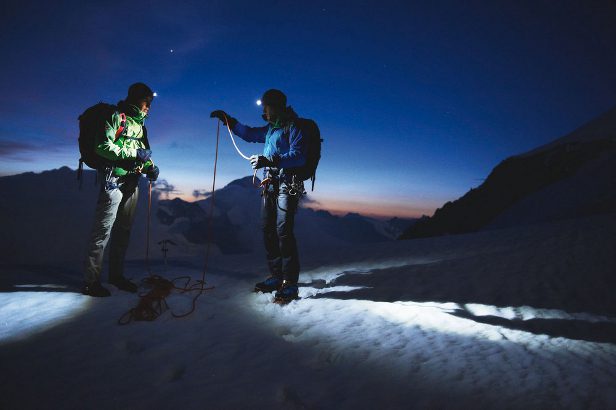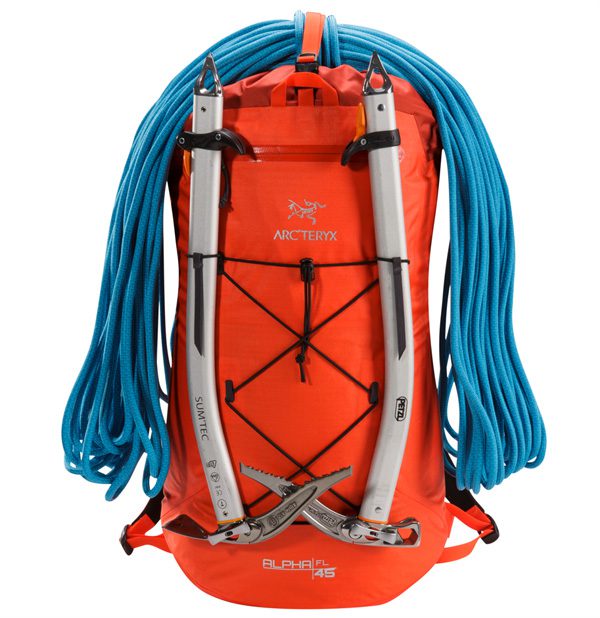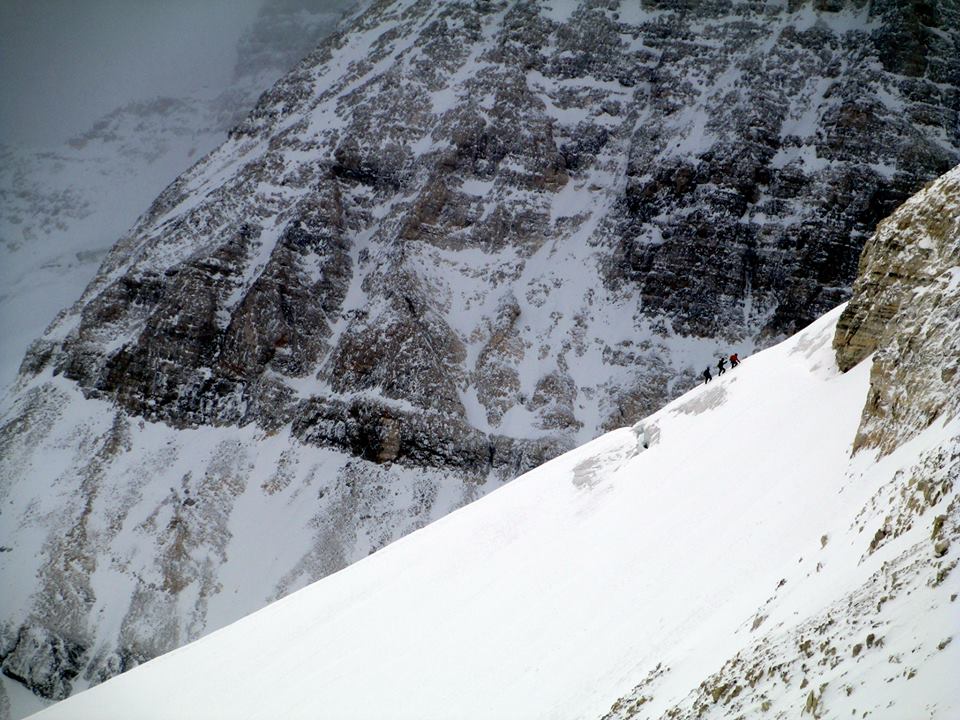10 Tips for Your First Alpine Climb
Alpine climbing can bring you to amazing places, but a lot can go wrong so be sure that you're prepared

Alpine climbing involves lengthy approaches, big hazards, committing routes and long days. It’s recommended that before you head into the alpine, you get professional training. Hiring a guide to learn the ropes is a great idea. Below are 10 tips for new alpinists.
Start small: To fine tune the skills you need in the alpine, start small and on a route well below your comfort level. If you climb 5.12 and have good cardio fitness, then start on a grade II 5.5. When you factor in the approach, descent and route finding, that “low” grade can pack a punch. Most alpine climbs include some glacier travel, so select routes with low-angle and uncomplicated terrain to start. Stay roped up on glaciers.
Research and plan: Don’t just pick a route in a guidebook and head out. Many alpine routes change over the years. As glaciers melt, approaches and key sections of the climb might’ve changed since the guidebook was published. Check online and ask around for any updated information. You’d be surprised how many alpine climbs require using a forestry service road (FSR), which may or may not be open. Have a plan B and C, which might be a cragging day or less committing multi-pitch.
Don’t think light and fast: Over the past few years, the light-and-fast style has trickled down from the top climbers using it to bag big one-day climbs to amateur climbers who like how it sounds. Bring everything you need and if you start on a route below your comfort level then you won’t have to rush. As you get more comfortable, you can think about shedding gear and moving quicker.

Print a topo, use the topo: No one ever regrets bringing a printed topo. While many climbers now use phones to show them the way, having a printed topo as a backup can save your day. Alpine climbs are complicated, and route finding can be difficult. You don’t want to be wondering where the rappel station is on the top of a mountain when your phone dies.
Be prepared to walk away: Being keen is what got you to the base of an alpine route, but being smart will up the chance you’ll climb another day. Weather, routes conditions and psych are three of the biggest factors that stop your climb before it starts. More than one top alpinist has approached for hours only to turn around and walk back to the car for one reason or another. Go with your gut feeling and listen to your partner.
Don’t solo: If you’re new to alpine climbing, go with a partner and stay roped up. Loose ledges, shattered ridges, slippery slopes can all send you flying. Stay clipped in to each other and the mountain. All the great solo climbers spent years perfecting their skills before ditching the rope.

Understand systems: Alpine terrain is complicated. Unlike the crag where the routes are clean, chalk marks the way and beefy chains let you rappel with ease, the alpine often feels untouched. You’ll be clipping rusty pitons, backing up old fixed gear and using often-manky rappel anchors to get down. You need to know how to equalize a three- to five-point anchor made of marginal placements. You need to know when to extend protection and how to protect a second on a traverse.
Bring a hammer: It’s 2022, but you might find yourself clipping into a piton from 1970. Hopefully you’ve selected updated alpine climbs for your first few days out, but if you do come across a piton, you want to make sure it’s in the rock solid. Many pitons can wiggle out due to freeze/thaw. Give that old knifeblade a few good whacks with your hammer before clipping in.
Manage your time: Factor in the fact that your approach will take longer than you think, and the descent never goes as planned. On the route, don’t stop to have long lunch breaks. Always be moving or managing your equipment. You and your partner need to be a well oiled machine of efficiency.
Sporty bergschrund crossing on Mt Fay Aug 27. Always love seeing the sun rise from the alpine, especially from inside a gaping crevasse ? #mountaineering #morrainelake #valleyofthetenpeaks #alpinism #alpineclimbing @bremirynech @kellykeepitwild @freya_frenchyA post shared by Kris Irwin (@rockiesalpineguide) on


